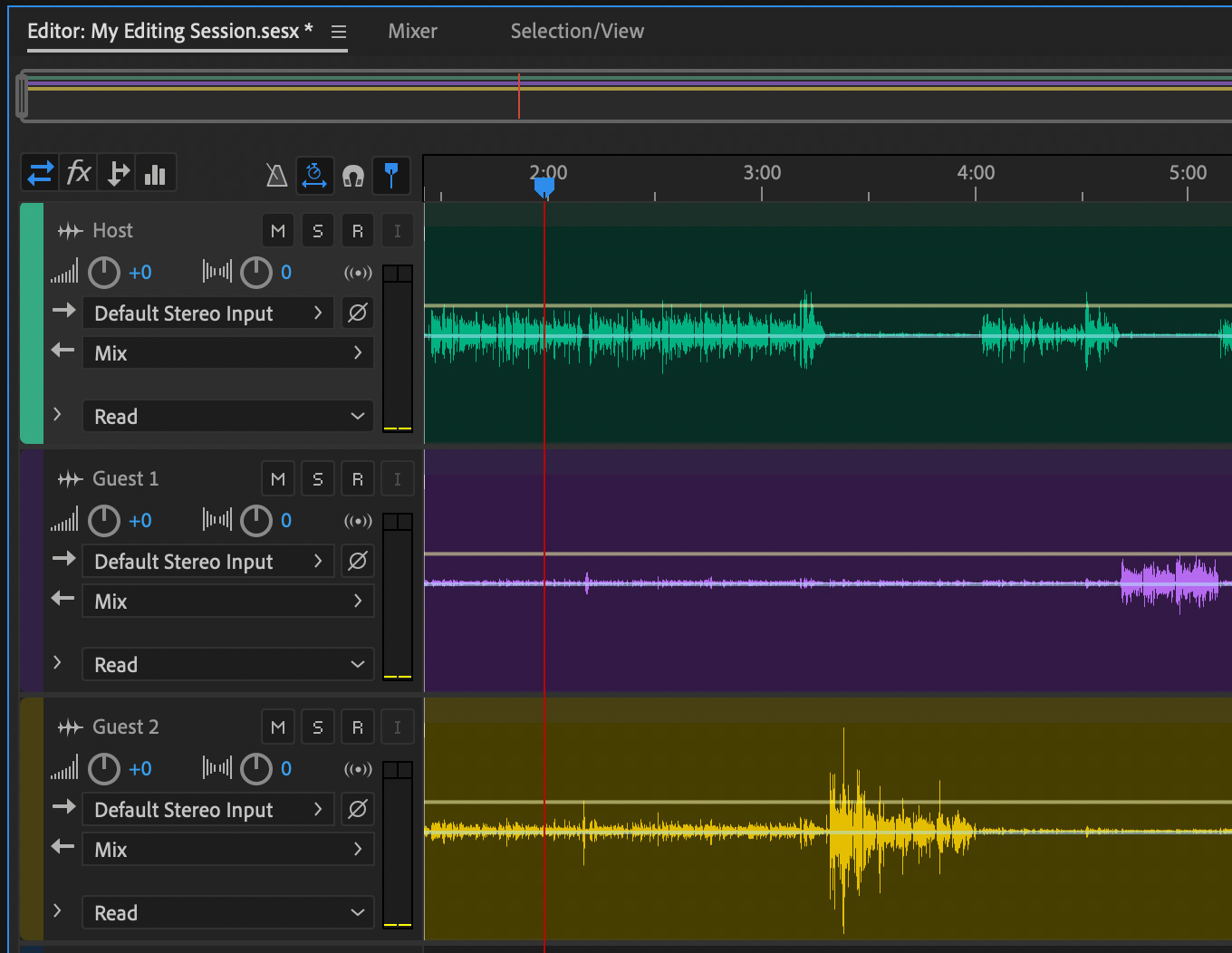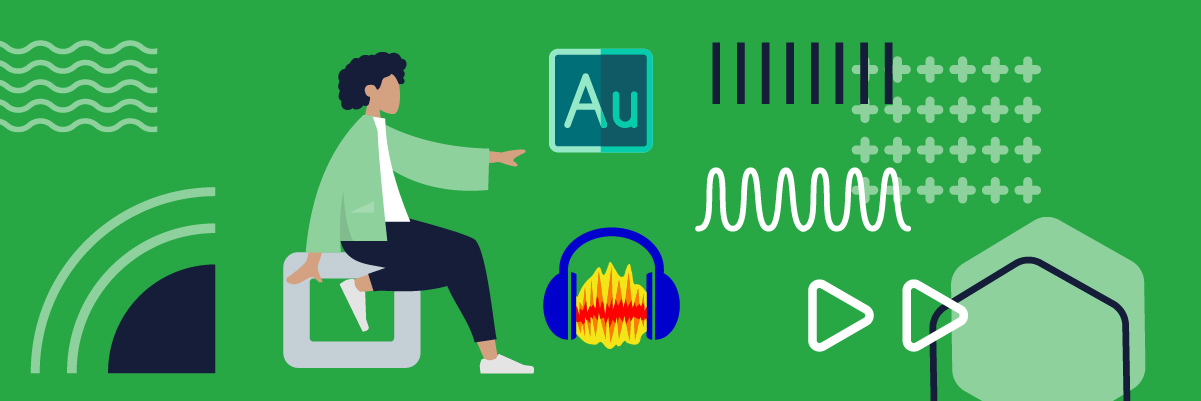- Adobe Audition Alternative
- Adobe Audition free. download full
- Adobe Audition Meaning
- Adobe Audition 6.0 Free Download
- Adobe Audition One Time Purchase
Integrate Adobe Audition into your post production workflow! Utilize Audition’s powerful tools for fixing common audio problems like background noise, hum, clipping, clicks and pops.
Adobe Audition can quickly clean up audio and fix problems that Premiere Pro cannot. In this post we cover common audio problems that you may encounter in your video editing and post production – and how to address these issues using the tools within Adobe Audition.
I'm using Adobe Audition 2020 and having some issues exporting an OMF as a.wav. It's telling me I don't have enough space on my C: drive, but I have around 760GB free. When I do try to export, it creates a lot of temp files filling up my entire drive. What is Adobe Audition? Audition is the sound room. Useful for editing audio, it can be used to edit and mix sounds or fine-tune and re-master soundtracks. Buying in-store doesn't mean you. Navigate Audition’s collection of searchable, high-definition sound effects to discover exactly what you’re looking for. Don’t worry about duds. Audition’s sound effects are always royalty-free, fully uncompressed files that ensure crisp, rich sound perfect for podcasting and video production.
If you’re looking for tips on a Premiere Pro to Audition workflow, check out my previous posts on roundtripping your video editing clips and sequences into Audition and back to Premiere.
Noise Reduction in Audition
Adobe Audition has powerful noise reduction tools that be accessed in the Waveform Editor. If you are in a Multitrack Session, double click on a track to go into the Waveform Editor.
Click and drag to select several seconds of background/ambient only sound. The more time you have to sample the better your results will be. Make sure you do not select any audio with voices or other noises!

Go to Effects > Noise Reduction (process). Click “Capture Noise Print” and then “Select Entire File”.
Adobe Audition Alternative
Click “Noise Only” to hear what you are removing (deselect it before you click apply). Click the green button on & off to toggle the effect as you adjust the “Noise Reduction” & “Reduce by” sliders.
If you prefer shortcuts, use Shift +P to save a noise print and CMD/CNTRL/Shift + P to open the “Noise Reduction” Effect. I suggest making shortcuts for effects you commonly use (do this by accessing the shortcut editor in the menu bar, Edit >Keyboard Shortcuts).
Adaptive Noise Reduction
Adaptive Noise Reduction automatically learns what noise is, as long as you have background noise before people start speaking. To take advantage of this tool, it is a good habit to always record 4-5 seconds of audio before your talent starts speaking.
In Adobe Audition, you can also combine Adaptive Noise Redution with other effects in the Effects Rack (which you can’t do with standard Noise Reduction). It is part of several presets like “Clean up and Level Voice-Over” that can help you get started if you are new to audio effects.
Remove Hum in Audition
This Adobe Audition effect comes in handy if you are doing a lot of location filming where you can’t control the production environment.
Use this to remove AC hum (lights, power lines, electronics). In my example I was picking up hum from an Xbox 360 in the room.
Go to Effects > Noise Reduction/Restoration > Dehummer. Select your preset based on country. I’m in the states so I picked 60Hz.
Auto Heal & Spot Healing
You can use Auto Heal & the Spot Healing Brush to remove clicks, pops, and other short noises you want to remove from your audio.
Zoom in by pressing the plus key and select the pop. Right click and select “Auto Heal” (Comm/Control + U).
You can also paint a selection with the spot healing brush(B) by dragging over the area to fix in the “Spectral Frequency” display.
Using the Diagnostic Panel
Access the Diagnostics panel in Audition by choosing Window > Diagnostics from the menu bar. The powerful diagnostic panel provides tools to fix clipping, clicks and pops in your audio.
The Declipper is handy for repairing clipped audio. Select the DeClipper Effect in the Diagnostic panel. Click Scan and your clipping areas will be listed. Select a listed problem to move to it in the waveform.
Adobe Audition free. download full
You can fix each one at a time or click Repair All.
Note: Depending on your audio it may still appear clipped, as Audition works in 32 bit floating point. Decrease the amplitude or use Normalize to see that the audio isn’t actually clipped. I have had varied results with the DeClicker, so if it dozen’t fix your issues, you the manual method mentioned above using Auto Heal & Spot Healing Brush.
Before:
After:
Utilize a Premiere to Audition workflow to take advantage of these great audio tools in your video editing projects. For more details on working with audio in Adobe Audition see Adobe Help.
definition - Adobe Audition

definition of Wikipedia
Advertizing ▼
Wikipedia
Adobe Audition CS5.5, running on Windows XP. | |
| Developer(s) | Adobe Systems |
|---|---|
| Initial release | 18 August 2003 |
| Stable release | CS6 (5.0) / 23 April 2012; 2 months ago |
| Preview release | Unknown |
| Operating system | Windows XP SP3 and newer, Windows Vista, Windows 7, Mac OS X Leopard 10.5.8 and newer. |
| Type | Digital audio workstation |
| License | Proprietary |
| Website | Adobe Audition Homepage |
Adobe Audition (formerly Cool Edit Pro) is a digital audio workstation from Adobe Systems featuring both a multitrack, non-destructive mix/edit environment and a destructive-approach waveform editing view.
|
Origins
Syntrillium Software was founded in the early 1990s by Robert Ellison and David Johnston, both former Microsoft employees. Originally developed by Syntrillium as Cool Edit, the program was distributed as crippleware. The full version was useful and flexible, particularly for its time. Syntrillium later released Cool Edit Pro, which added the capability to work with multiple tracks, as well as other features. Audio processing, however, was done in a destructive manner (at the time, most computers were not powerful enough in terms of processor performance and memory capacity to perform non-destructive operations in real time). Cool Edit Pro v2 added support for real-time non-destructive processing, and v2.1 added support for surround sound mixing and unlimited simultaneous tracks (up to the limit imposed by the actual computer hardware). Cool Edit also included plugins such as noise reduction and FFTequalization.
Adobe purchased the latest, non-shareware version (Cool Edit Pro v2.1) from Syntrillium Software in May 2003 for $16.5 million[1] as well as a large loop library called 'Loopology'. Adobe then changed the name of Cool Edit Pro to 'Adobe Audition'.
Versions
Version 1
Adobe Audition was released on 18 August 2003. It had no new features, and was essentially Cool Edit Pro under a different name. Adobe then released Audition v1.5 in May 2004; major improvements over v1 included pitch correction, frequency space editing, a CD project view, basic video editing and integration with Adobe Premiere, as well as several other enhancements.
Version 2
Adobe Audition 2 was released on 17 January 2006. With this release, Audition (which the music recording industry had once seen as a value-oriented home studio application, although it has long been used for editing by radio stations) entered the professional Digital Audio Workstation market. The current version included two sections. Multitrack View supported up to 128 digital audio mono or stereo tracks at up to 32-bit resolution. In the Track Controls section one could select the input and output for each track (the program supported multiple multi-channel sound cards), select Record, Solo and Mute, and access the effects rack. New features included ASIO (Audio stream input output) support, VST (Virtual Studio Technology) support, new mastering tools (many provided by iZotope), and a redesigned UI. Adobe also included Audition 2.0 as part of its Adobe Production Studio bundle.
Version 3

Adobe Audition 3 was released on 8 November 2007. New features included VSTi (virtual instrument) support, enhanced spectral editing, a redesigned multi-track interface, new effects, and a collection of royalty-free loops.
Version 4 (CS5.5)
Audition 4, also known as Audition CS5.5, was released on April 11 2011 as part of Adobe's Creative Suite of programs. Audition 4 was shipped as part of the Adobe Creative Suite 5.5 Master Collection and Adobe Creative Suite 5.5 Production Premium, replacing the discontinued Adobe Soundbooth. Audition 4 was also made available as a standalone product. Enhanced integration with Adobe Premiere Pro allowed editing of multitrack Premiere projects, and users of third-party software were served by the introduction of OMF- and XML-based import/export functions. Other new features included improved 5.1 multichannel support, new effects (DeHummer, DeEsser, Speech Volume Leveler, and Surround Reverb), a History panel, faster and fully supported realtime FFT analysis and a new audio engine (more reliable and faster) for non-ASIO devices.
According to Adobe[2], Audition CS5.5 was rewritten from the ground up to take advantage of parallel/batch processing for performance and make it a platform-agnostic product. Audition CS5.5 now works on Windows and Mac platforms. Over 15 years of C++ code was analyzed, and many, but not all, features of the previous Audition 3 were ported and/or enhanced. Unlike all the previous versions, this is the first version to be available as a Mac version as well as a Windows version.
Version 5 (CS6)

Adobe showed a sneak preview of Audition CS6[3] in March 2012 highlighting clip grouping and automatic speech alignment (which had its technology previewed[4] in September 2011). Audition CS6 was released on April 23, 2012, as part of both Creative Suite 6 Master Collection and Creative Suite 6 Production Premium. It included faster and more precise editing, real-time clip stretching, automatic speech alignment, EUCON and Mackie control surface support, parameter automation, more powerful pitch correction, HD video playback, new effects; and more features.
See also
| Music portal |
- Adobe Soundbooth - The lightweight audio editing software for consumers (as included in CS3-5)
References
- ^[1] United States SEC Form 10-Q, Adobe Systems, Inc., May 30, 2003
- ^[2] Adobe Forums: Audition CS5.5 and the future of Audition
- ^[3] Adobe Audition CS6 Sneak Peek
- ^[4] MAX 2011 Sneak Peek - RubbaDub
External links
|
Adobe Audition Meaning
|
Adobe Audition 6.0 Free Download
|
Adobe Audition One Time Purchase
This entry is from Wikipedia, the leading user-contributed encyclopedia. It may not have been reviewed by professional editors (see full disclaimer)
